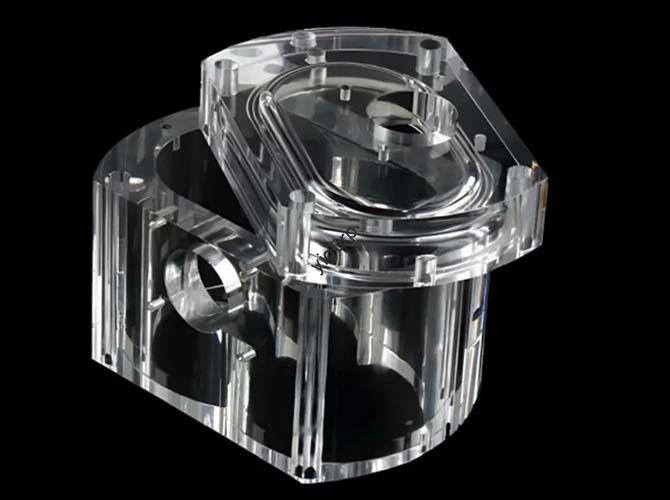If you’re a manufacturer, дизайнер, or entrepreneur considering adopting new production technologies, Вы, вероятно, слышали о 3D Печать. But is it worth the investment? This guide breaks down the key pros and cons of 3D printing—backed by real data and use cases—to help you make an informed decision.
1. Core Overview: What Makes 3D Printing Unique?
Before diving into pros and cons, let’s clarify: 3D Печать (или аддитивное производство) builds objects layer by layer from digital CAD models, unlike traditional “subtractive” methods (НАПРИМЕР., Обработка с ЧПУ) that remove material from a solid block. This fundamental difference drives its biggest advantages—and challenges.
2. The Pros of 3D Printing: How It Solves Business Pain Points
3D printing’s strengths make it a game-changer for specific use cases. Ниже приведены его главные преимущества, with actionable examples:
| Категория преимуществ | Ключевое преимущество | Пример реального мира |
| Гибкость дизайна | Achieves complex geometries (НАПРИМЕР., решетчатые структуры, внутренние каналы) impossible with traditional methods. | A medical device company used 3D printing to create a heart stent with tiny, custom flow channels—improving patient recovery by 30%. |
| Быстрое прототипирование | Turns CAD designs into physical prototypes in hours (против. weeks for molds), speeding up product development. | A startup reduced its new smartphone case design cycle from 8 недели до 5 days using 3D printing. |
| Эффективность материала | Reduces waste by 40-60% (only uses material needed for the part, not excess for cutting). | An aerospace firm cut aluminum waste from 70% (Обработка с ЧПУ) к 15% (3D Печать) Для компонентов двигателя. |
| Энергия & Устойчивость | Consumes 30-50% less energy than traditional manufacturing, lowering carbon emissions. | A furniture brand’s 3D-printed chairs reduced production-related CO₂ by 45% compared to injection-molded versions. |
| Low-Volume Cost Savings | Eliminates expensive molds (стоимость \(10k-\)100k+), Сделать небольшую стоимость производства доступным. | A jewelry designer now produces custom necklaces in batches of 50 (против. 500 minimum for molding) without raising prices. |
3. The Cons of 3D Printing: Ограничения для рассмотрения
Хотя мощный, 3D printing isn’t a one-size-fits-all solution. Here are its key drawbacks—and who they impact most:
3.1 High Upfront & Operational Costs
- Промышленные принтеры: Расходы \(50k-\)1M+ (против. \(10k-\)50k for basic CNC machines).
- Специальные материалы: Metal powders or high-performance resins can cost \(50-\)500 за килограмм (против. \(2-\)10 for raw plastic pellets).
- Who it affects: Small businesses with tight budgets or those needing only basic production.
3.2 Материал & Quality Limitations
- Limited materials: Most printers only work with plastics, смолы, or a few metals (НАПРИМЕР., титан, сталь). Высокотемпературные пластмассы (for engines) or flexible rubbers are still rare.
- Accuracy gaps: Точность размеров (± 0,1 мм) и шероховатость поверхности (often requiring post-processing) may not meet engineering standards for critical parts (НАПРИМЕР., car brakes).
- Case in point: A automotive supplier had to reject 3D-printed brake calipers because their surface roughness caused brake fluid leaks.
3.3 Скорость & Scalability Issues
- Slow for mass production: A 3D printer takes 2-8 часы, чтобы сделать 1 plastic part; an injection molding machine makes 100+ в час.
- Who it affects: Brands needing 10k+ units monthly (НАПРИМЕР., water bottle manufacturers).
3.4 Относящийся к окружающей среде & Legal Risks
- Waste from failed prints: 15-20% of 3D prints fail (due to layer adhesion or design errors), creating non-recyclable waste (НАПРИМЕР., some resins).
- Intellectual property (IP) theft: Digital 3D files are easy to copy, leading to counterfeit products.
- Пример: A toy company found 3D-printed knockoffs of its designs being sold online within 2 weeks of launch.
4. Pros vs. Минусы: A Quick Decision Checklist
To simplify your choice, use this table to match 3D printing’s strengths/weaknesses to your needs:
| Your Business Need | 3D Printing Is a Good Fit? | Почему? |
| Маленькая партийная производство (1-1,000 единицы) | ✅ Yes | Avoids mold costs; Быстрый поворот. |
| Сложный, custom designs | ✅ Yes | Enables geometries traditional methods can’t match. |
| Массовое производство (10k+ units monthly) | ❌ No | Too slow; Инъекционное формование дешевле. |
| Критические части (НАПРИМЕР., Медицинские имплантаты) | ⚠️ Maybe | Requires high-quality printers/materials; test rigorously first. |
| Tight budget (under $50k for equipment) | ❌ No | Upfront printer costs are too high. |
5. Перспектива Yigu Technology на 3D -печать
В Yigu Technology, Мы видим 3D Печать as a complementary tool—not a replacement for traditional manufacturing. Its strengths (Гибкость, устойчивость) solve client pain points like slow prototyping or custom parts, but we always address limitations upfront: we help clients choose printers/materials for their use case (НАПРИМЕР., SLA for detailed prototypes, SLM for metal parts) and optimize designs to reduce waste. Например, we helped a medical client adjust their 3D-printed implant design to cut post-processing time by 30%. While challenges exist, 3D printing’s future (faster speeds, more materials) makes it a smart long-term investment for businesses prioritizing innovation.
Часто задаваемые вопросы: Your Top 3D Printing Questions Answered
- Q.: Can 3D printing replace injection molding for my plastic products?
А: Only if you make small batches (под 1,000 единицы). For 10k+ units, injection molding is 50-70% cheaper and 10x faster.
- Q.: Are 3D-printed parts strong enough for industrial use?
А: It depends—metal 3D-printed parts (НАПРИМЕР., SLM titanium) have 90-95% the strength of forged metal, but plastic parts may not handle heavy loads. Test with your specific material/design first.
- Q.: How can I reduce 3D printing waste from failed prints?
А: Use simulation software to check designs before printing, choose high-quality materials, and train staff on printer calibration. Yigu Technology’s workflow tools cut client failure rates from 18% к 7%.
